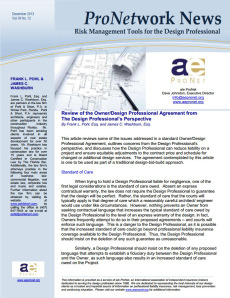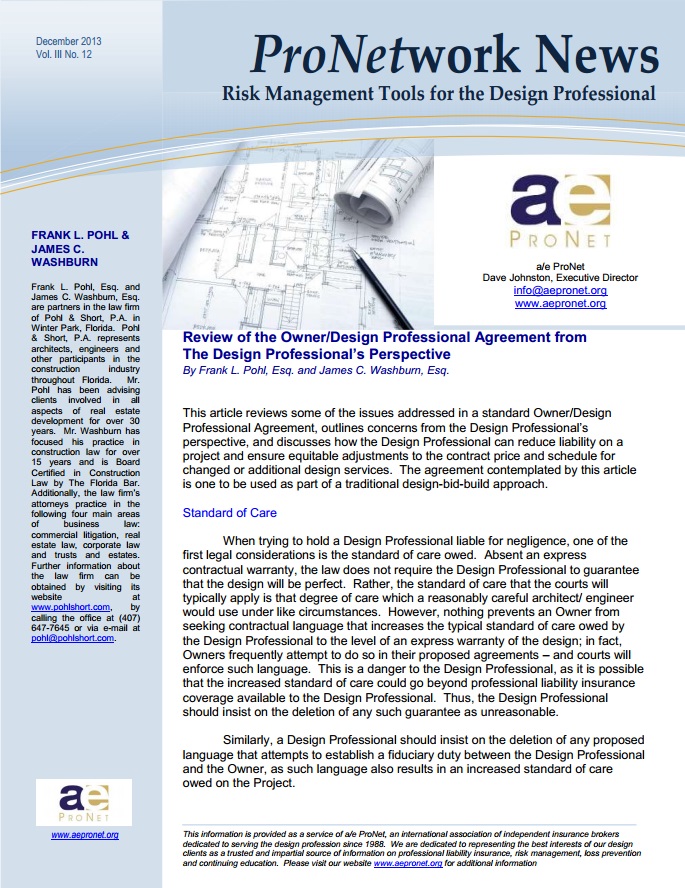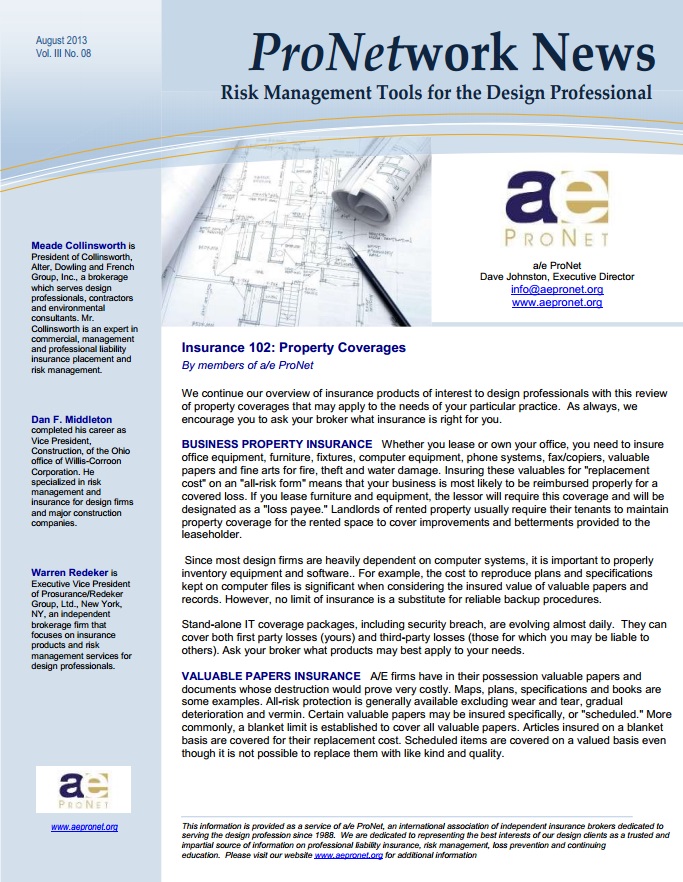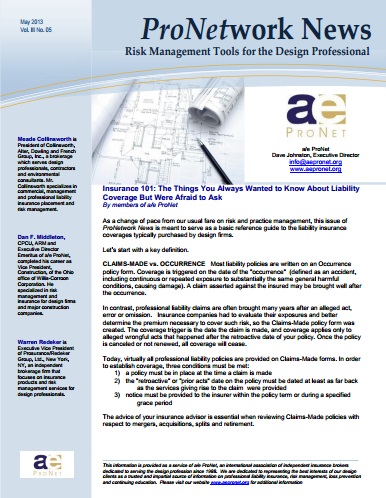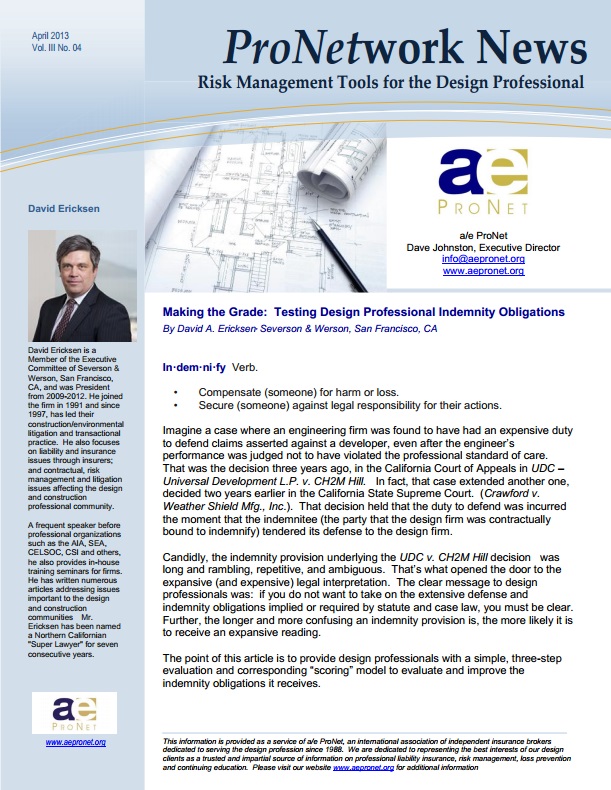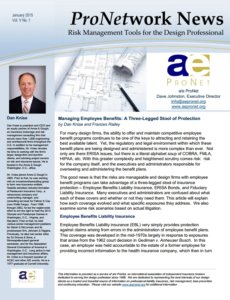 For many design firms, the ability to offer and maintain competitive employee benefit programs continues to be one of the keys to attracting and retaining the best available talent. Yet, the regulatory and legal environment within which these benefit plans are being designed and administered is more complex than ever. Not only are there ERISA issues, but there is a literal alphabet soup of COBRA, FMLA, HIPAA, etc. With this greater complexity and heightened scrutiny comes risk: risk for the company itself, and the executives and administrators responsible for overseeing and administering the benefit plans.
For many design firms, the ability to offer and maintain competitive employee benefit programs continues to be one of the keys to attracting and retaining the best available talent. Yet, the regulatory and legal environment within which these benefit plans are being designed and administered is more complex than ever. Not only are there ERISA issues, but there is a literal alphabet soup of COBRA, FMLA, HIPAA, etc. With this greater complexity and heightened scrutiny comes risk: risk for the company itself, and the executives and administrators responsible for overseeing and administering the benefit plans.
The good news is that the risks are manageable and design firms with employee benefit programs can take advantage of a three-legged stool of insurance protection – Employee Benefits Liability Insurance, ERISA Bonds, and Fiduciary Liability Insurance. Many executives and administrators are confused about what each of these covers and whether or not they need them. This article will explain how each coverage evolved and what specific exposures they address. We also examine some risk scenarios based on actual litigation.
Employee Benefits Liability Insurance
Employee Benefits Liability insurance (EBL) very simply provides protection against claims arising from errors in the administration of employee benefit plans. This coverage was developed in the mid-1970s largely in response to exposures that arose from the 1962 court decision in Gediman v. Anheuser Busch. In this case, an employer was held accountable to the estate of a former employee for providing incorrect information to the health insurance company, which then in turn denied the employee’s claim. Thus, EBL insurance addresses claims arising out of errors or omissions in the administration of benefit plans. Three typical exposure scenarios covered by EBL insurance include:
- An employer failing to properly enroll an employee for health insurance coverage, resulting in a denial of coverage.
- An employer not providing an employee with the appropriate COBRA information after termination, resulting in the ex-employee being unable to continue participating in the health insurance plan as required by law.
- An employer incorrectly calculating the amount of an employee’s pension benefit so that the employee decides to retire early only to find that the amount is much less.
Continue reading “Managing Employee Benefits: A Three-Legged Stool of Protection”




